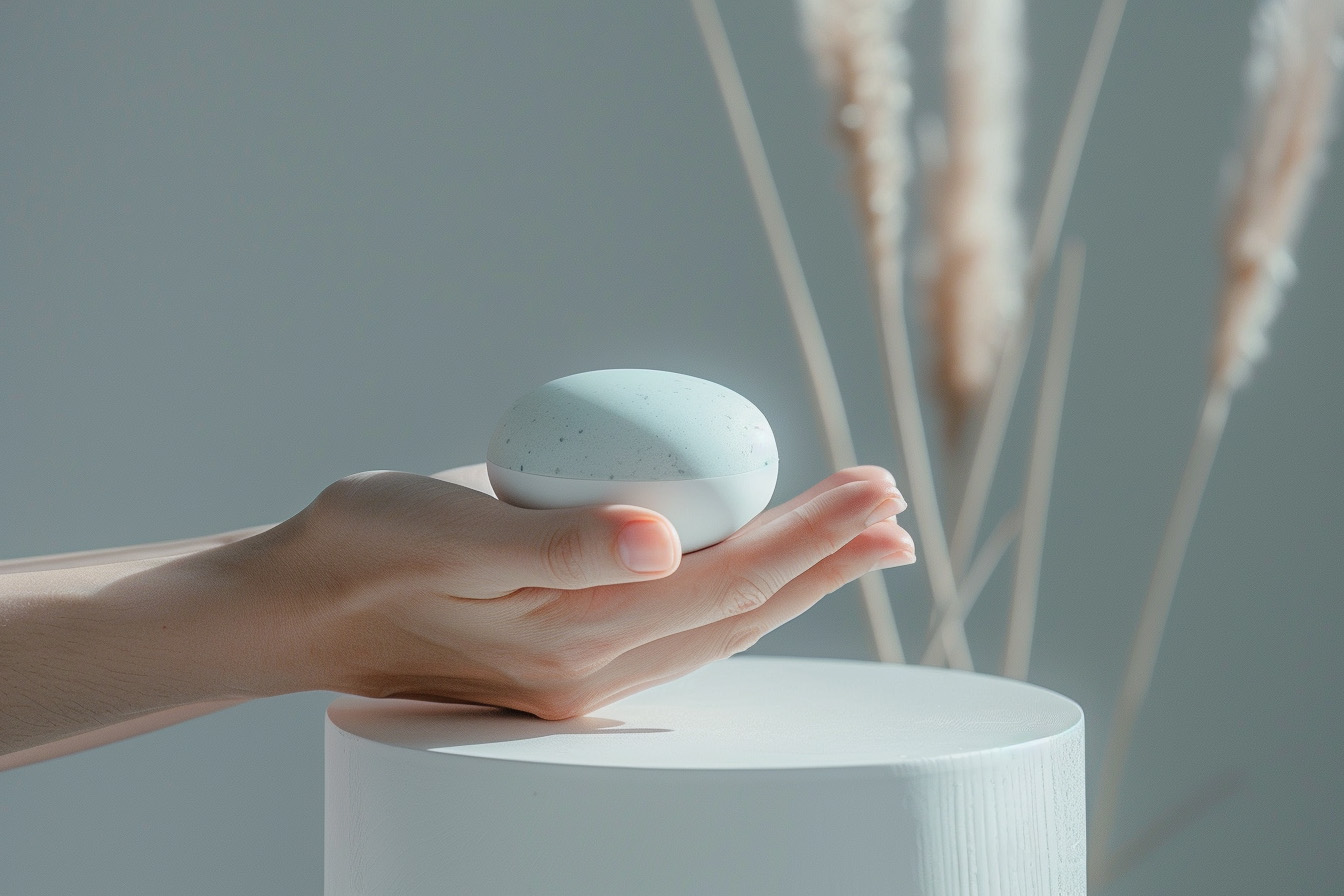Unlocking Wellness Through Touch: The Untapped Potential of Haptics

Haptic technology, often associated with the simple “buzz” of our smartphones, is set to play a significant role in wellness and healthcare applications. Beyond its established use in gaming and mobile devices, haptics has the capability to influence both emotional and physical states, offering new avenues to enhance relaxation,improve sleep quality, and aid rehabilitation. With the wellness industry projected to grow to USD 8.47 trillion by 2027 (source), the integration of haptics into this space is a natural progression that promises to unlock transformative experiences.
In this blog post, we examine how haptics is reshaping wellness and medical technologies. Companies like Sensate have developed devices that use haptic feedback to compliment meditation, while GaitQ is creating rehabilitation tools that provide real-time tactile feedback to improve patient mobility. Whether it’s through subtle vibrations or synchronized audio-haptic experiences, haptics is emerging as a cornerstone in how we manage our health and well-being.
The Profound Effects of Vibration and Music On Our Wellbeing
Using vibrations for health and wellness is a concept that dates back centuries. As early as the 18th century, carriage rides on rough cobblestone roads were observed to have positive health effects (source), highlighting the inherent benefits of mechanical vibrations on the human body. This early recognition paved the way for the development of whole body vibration (WBV) therapy, also known as whole body periodic acceleration (WBPA). WBV typically involves standing on oscillating platforms that produce mechanical vibrations, initially developed to counteract the effects of weightlessness on bone density and muscle mass experienced by astronauts. Shortly after its inception, WBV found applications in the sports industry, enhancing athletic performance and recovery (source).
In addition to WBV, music therapy has long been recognized as a powerful modality for improving mental and emotional well-being. Research shows that music-based interventions may help to relieve pain associated with specific health conditions such as anxiety, depression, Parkinson’s Disease, and dementia (source).
Dr. Lee Bartel and Dr. Abdullah Mossabir also explored the impact of sound vibrations on human well-being. Their study concluded that auditory and vibrotactile stimulation from low-frequency sounds affects the body through two primary mechanisms: Physical Mechanisms, where vibrations influence muscular and cellular functions, promoting, promoting physical health and aiding in the maintenance of muscle and bone integrity; and Neurological Mechanisms, where the vibrotactile stimulation activates sensory nerves and receptors, enhancing neurological responses and contributing to overall mental well-being.
Another study conducted by Salminen and colleagues examined the emotional and behavioral effects of various haptic simulations. Their research revealed that certain rotating stimuli were perceived as significantly more unpleasant, arousing, avoidable, and dominant compared to other types of haptic simulations. Additionally, participants exhibited notably faster reaction times to these certain stimuli. These findings led the researchers to conclude that even simple haptic simulations are capable of conveying distinct emotional information (source).
These historical and contemporary studies highlighted above demonstrate the extensive benefits that vibration and haptic technology offer for both physical and mental well-being. Furthermore, they underscore the potential of haptics to drive innovative advancements in health and wellness, paving the way for more effective and personalized therapeutic solutions.
Haptics in Wellness
Already, some companies have recognized the profound effects of vibration on the body, and developed products to leverage these benefits. A prime example is Sensate, which has created a device designed to help users engage in calm meditation through haptic feedback. By delivering gentle vibrations in sync with the user’s breathing patterns, Sensate promotes relaxation and reduces stress, providing a tangible tool for enhancing mental well-being.
Another example is Apollo, a company that has developed a wearable device aimed at enhancing sleep quality through the use of haptic technology. Apollo’s device not only tracks various sleep metrics, such as duration, quality, and sleep stages, but also utilizes gentle vibrations to promote deeper and more restful sleep. By delivering subtle haptic feedback during specific sleep phases, Apollo helps users transition more smoothly between sleep stages and reduce instances of waking up during the night.
Haptics in Medical Devices
In the medical field, companies like GaitQ are harnessing haptic technology to transform rehabilitation processes. GaitQ is developing haptic-enabled medical devices specifically designed to improve patient mobility and facilitate more effective rehabilitation. These devices provide real-time feedback to individuals recovering from injuries or surgeries, assisting them in regaining their gait and balance with greater precision and efficiency.
Meanwhile, Neofect is developing smart rehabilitation tools that incorporate haptic feedback to guide patients through their exercises. These tools make physical therapy more interactive and engaging, ensuring that patients perform movements correctly and consistently. By providing immediate tactile responses, Neofect’s devices help improve the effectiveness of rehabilitation exercises, leading to faster and more sustainable recovery outcomes.
These advancements illustrate how haptic technology is being integrated in medical treatments to enhance their effectiveness. And as haptics continues to evolve, its applications in the medical field are poised to expand, providing even greater support for patient rehabilitation and overall health.
What’s on the Horizon for Haptics
Haptics technology is evolving rapidly, moving beyond its current limited applications to unlock a world of possibilities in wellness, medicine, and beyond. By harnessing the power of vibration and music, haptics can profoundly impact our emotional and physical well-being, offering innovative solutions to age-old challenges.
As we look to the future, it’s clear that haptics will play a pivotal role in shaping how we interact with technology and manage our health. Ongoing developments in haptic products and research are likely to introduce new applications and improve user experiences. With dedicated researchers and innovative companies contributing to the field, future advancements in haptic technology may become more integrated into everyday devices and healthcare solutions, providing practical benefits and enhancing functionality in meaningful ways.
Related Articles
The Power of Haptics: Elevating Wellness to the Next Level
Why Haptics? Unveiling the Benefits and Applications of Haptic Technology
The Art and Science of Haptics Integration
